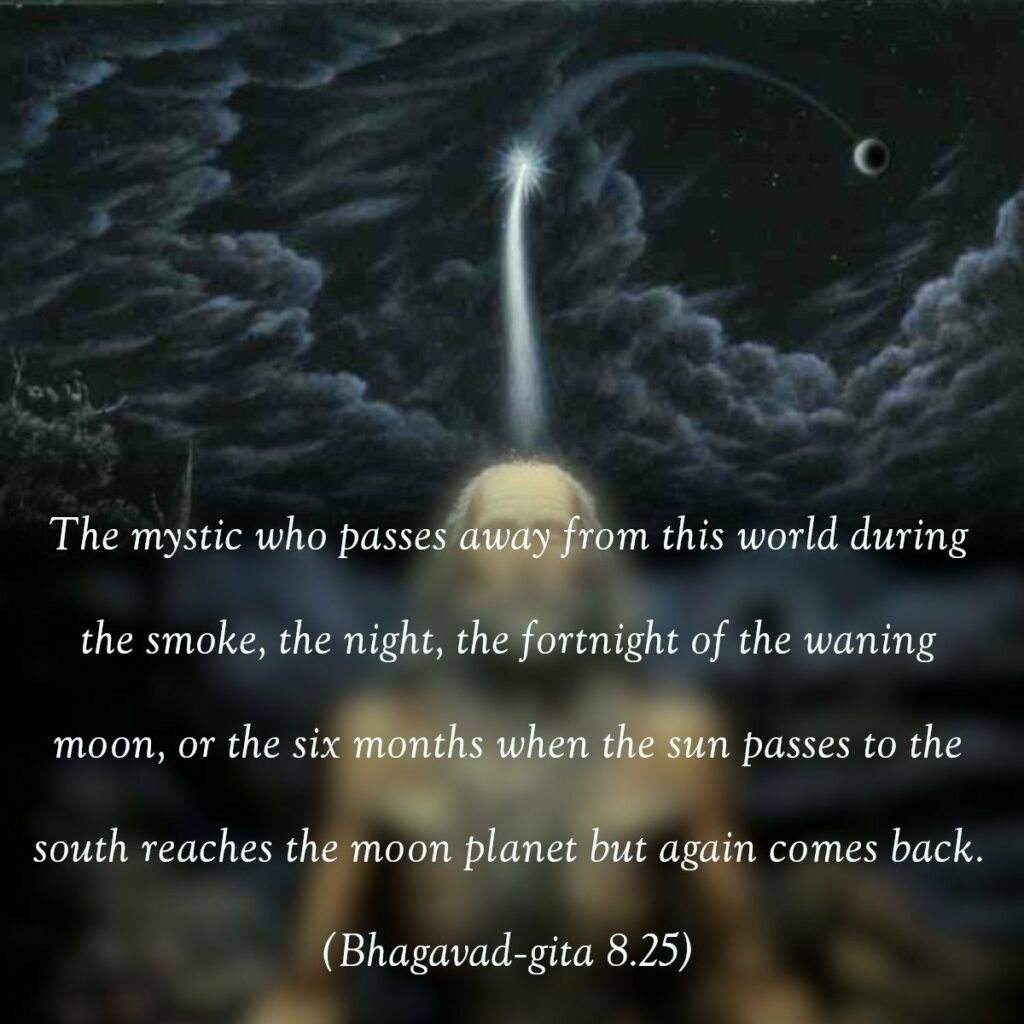धूमो रात्रिस्तथा कृष्ण: षण्मासा दक्षिणायनम् |
तत्र चान्द्रमसं ज्योतिर्योगी प्राप्य निवर्तते || 25||
dhūmo rātris tathā kṛiṣhṇaḥ ṣhaṇ-māsā dakṣhiṇāyanam
tatra chāndramasaṁ jyotir yogī prāpya nivartate
dhūmaḥ—smoke; rātriḥ—night; tathā—and; kṛiṣhṇaḥ—the dark fortnight of the moon; ṣhaṭ-māsāḥ—six months; dakṣhiṇa-ayanam—the sun’s southern course; tatra—there; chāndra-masam—lunar; jyotiḥ—light; yogī—a yogi; prāpya—attain; nivartate—comes back;
Translation:
Smoke, night, the dark half of the moon, and the six months of the southward passage of the sun— taking this path, the yogi reaches the lunar path and thence returns.
Commentary:
As knowledge is light, ignorance (avidya) is darkness. He who takes the later path is reborn again and again. Here the yogi is one who has performed actions with a desire to enjoy the fruits. As he has not understood the secret of Brahmajnana, he is subject to birth after birth. Here, smoke, night, the dark fortnight, stand for the enveloping darkness of ignorance. The Dakshinayana shows the downward path. The yogi who is devoid of Brahmajnana, reaching the lunar sphere, returns to the world again according to the nature of his Karma. The path of avidya is indicated by the southern solstice.
It is also necessary to understand the significance of Uttarayana and Dakshinayana. We find that many great souls have passed away in Dakshinayana and many deluded souls have passed away in Uttarayana. If the external meaning alone is taken, it would lead to the absurd conclusion that the ignorant attain the Light and the wise fall into darkness. The wise always take the upward path of light, whatever may be the time when the body falls. The deluded take the path of darkness, whatever may be the time when the body falls. The upward path signifies Jnana and the downward path Ajnana.
Question: What is the path taken by the man of desires?
Answer: He takes the path of darkness, indicated by smoke, night etc.
Question: Does he take birth again?
Answer: Yes.
Question: What is the implication?
Answer: Only by Atmajnana, man takes the upward path, and attains Brahman, the birthless and deathless state.
Bhagavad Gita: Chapter 8 🔻 (28 Verses)
